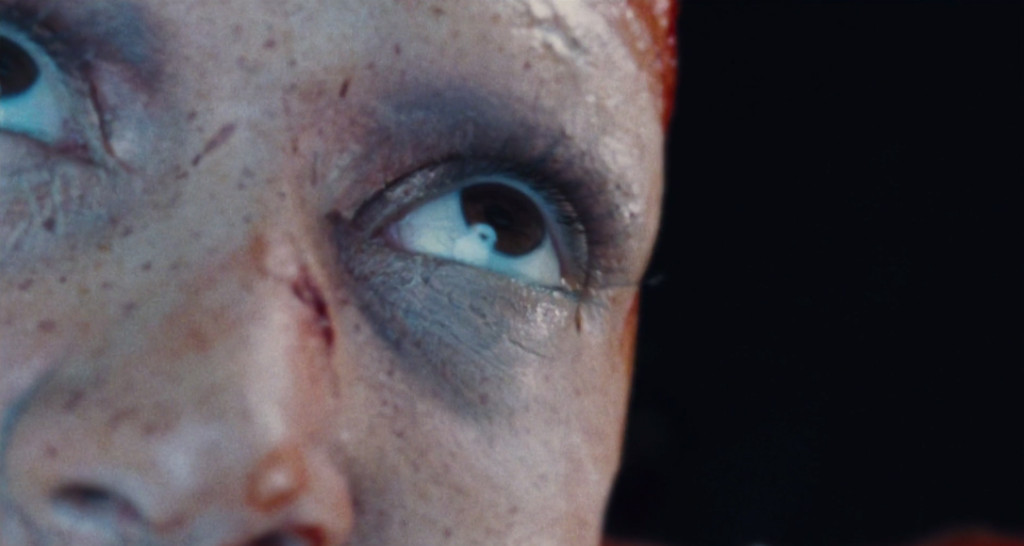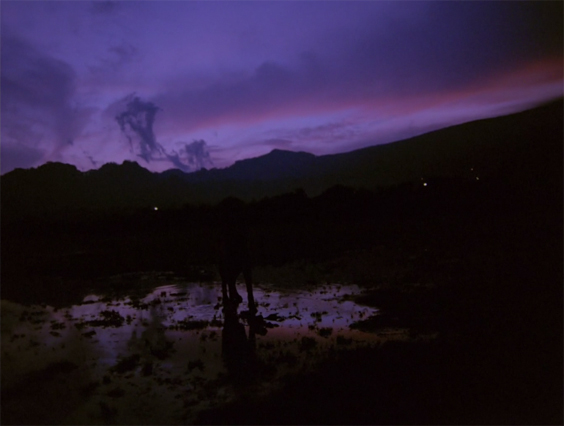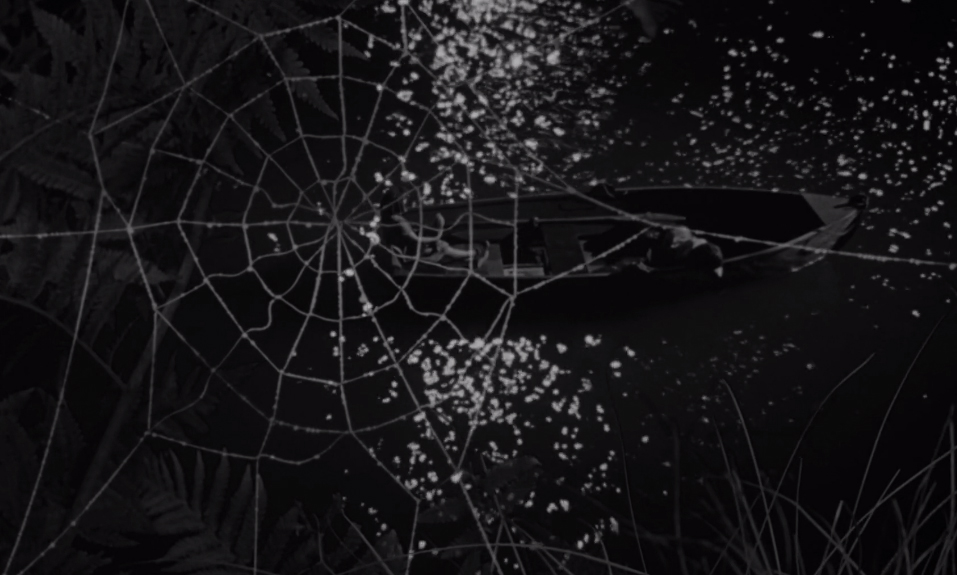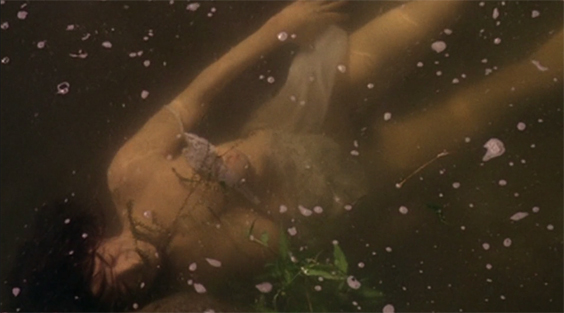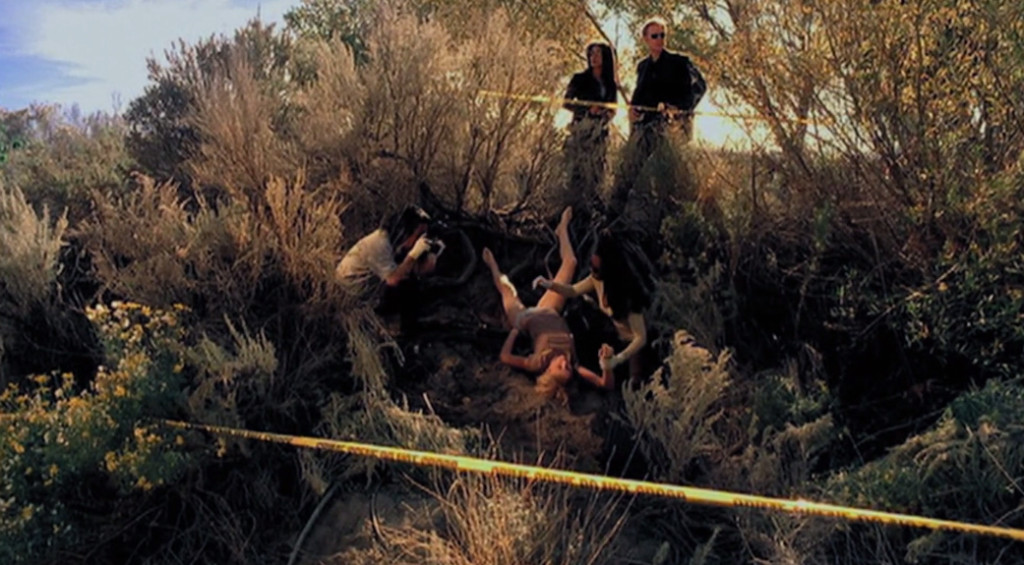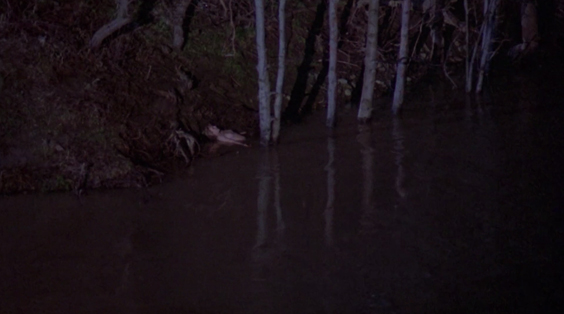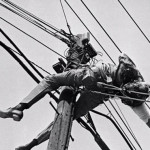HORROR IS NEVER FAR AWAY: “FEAR ITSELF” & “WHAT HAPPENED TO HER”
FEAR ITSELF is a feature-length essay film commissioned for the BBC’s iPlayer from 25-year old filmmaker and Guardian film columnist Charlie Lyne, which first ran in October 2015 and makes its North American debut at Toronto’s Hot Docs this weekend. The flipside (in topic, if not in tone) to his 2014 essay film BEYOND CLUELESS about high school cinema (with an emphasis on those films that emerged during his own formative years), FEAR ITSELF is a meditation on the way horror films emotionally manipulate us – and how we are complicit in that manipulation. It was part of a prolific year for Lyne; not only did he make headlines back in January for submitting a 10+ hour film of paint drying to the BBFC as a “protest against censorship and mandatory classification,”[i] but last year’s Hot Docs hosted the premiere of the film version of Ross Sutherland’s acclaimed fringe play STAND BY FOR TAPE BACKUP, which was produced and edited by Lyne, paired with Lyne’s short documentary COPYCAT at lowest propecia price the festival, and has gone on to raves at Fantastic Fest, Boston Underground and more. Like FEAR ITSELF and BEYOND CLUELESS, Sutherland’s film is also about self-exploration through cinema (though fueled by a more deeply personal methodology).
FEAR ITSELF is comprised of dozens of film clips from throughout horror history and its periphery (even films like ENDURING LOVE and POST TENEBRAS LUX are represented here), overlaid with a whispery narration by Scottish actress Amy E. Watson. Watson’s somnambulistic delivery contributes to the film’s sense of taking place in an arrested or dream-state, and though the narration often ties thematically with the images unfolding onscreen, it’s easy to find yourself flitting between them. Punctuating this interplay is a masterful score by Jeremy Warmsley, who does an excellent job of integrating select sounds from the films with his own concoction of anxiety and dread, most effectively utilizing Pearl’s lullaby from NIGHT OF THE HUNTER (you can listen to his full soundtrack on Soundcloud HERE: https://soundcloud.com/jeremywarmsley/sets/fear-itself-ost). The result of these elements is a tone not too far off from that of Johan Grimonprez’ essay film DOUBLE TAKE – which explored the events surrounding the making of Hitchcock’s THE BIRDS, employing both found and manufactured footage as well as Bernard Herrmann’s compositions – but FEAR ITSELF never quite reaches the same level of unease that made DOUBLE TAKE work as a standalone horror film in itself, possibly because the footage in Lyne’s film is more familiar than unheimlich.
That said, Lyne goes well beyond the usual suspects in selecting his clips – he is clearly the best kind of cinephile (I know this, because he used THE MUTILATOR theme song), who sees horror as inextractable from the larger cinematic landscape – and his editing is smart and perfectly timed. While the pace and interiority of the narration is going to be a deal-breaker for some viewers, what was most off-putting for me was actually a triptych of true crime references that the text attempts to bring in anecdotally. In a section focused on cinematic cannibalism, the 1972 Andes plane crash, the serial killer Fritz Haarmann and cannibal-turned-restaurant critic/actor Issei Sagawa are all mentioned in a manner of “Oh, by the way, I heard this story once…” that comes off as patently insincere. The faux naivete with which cialis brand only he introduces these stories, one after the other, undermines the critical authority on which the rest of the film hangs. The Andes crash became the Disney-produced film ALIVE (and earlier, Rene Cardona Jr.’s SURVIVE!), Haarman was personified onscreen by Fassbinder cohort Kurt Raab in Ulli Lommel’s TENDERNESS OF THE WOLVES and Issei Sagawa famously appeared in Hisayasu Sato’s weird pinku film THE BEDROOM, all buy pfizer viagra of which are represented here in clips. I suppose the anecdotes are meant to reinforce the notion that the film’s voice is not his, but that of a woman who has become reclusive and glued to the tube following a tragic accident.
The damaged, fictitious narrator of Lyne’s film finds a contrast in Kristy Guevara-Flanagan’s WHAT HAPPENED TO HER, which is narrated by actress Danyi Deats, who played the corpse of a character based on real-life murder victim Marcy Conrad in Tim Hunter’ RIVER’S EDGE. There is no denying the visual power of the film’s catalogue of images of female corpses in varying degrees of undress and decay, again compiled from dozens of cinematic sources, while Deats talks about the somewhat traumatizing experience of playing dead. WHAT HAPPENED TO HER looks at what transpires behind the scenes to create such imagery, and how its violence can be self-perpetuating if the actresses in service to the art do not have their own boundaries respected.
Through the tag team of interview and imagery we are confronted with the manipulation of women’s bodies into unnatural poses, both physically and through emotional coercion. The bodies are mangled, dangled and waterlogged – and yet they come off as strangely beautiful despite the horrific implications (Hot Docs’ Angie Driscoll astutely refers to the film as “a postmortem pageant”). Our ambiguous response to this imagery recalls Bram Dykstra’s seminal book Idols of Perversity, in which he discusses misogynic trends inherent in fin-de-siecle art, including such common images as “the collapsing woman” and “the nymph with the broken back” as well as the cult of invalidism and the fetish of sleeping and dead women (Pre-Raphaelite painter John Everett Millais’ painting Ophelia is a famous example of this). I don’t think that Dykstra, nor filmmaker Guevara-Flanagan are denying that the image of a woman’s corpse can have something sublime about it (it certainly can) – only that when these images become ubiquitous, when a woman’s body in an unnatural or painful pose is the only thing we can recognize as beautiful, it’s a sign of a more insidious societal problem, in which we are all complicit.
And here is where we get back to FEAR ITSELF – filmmakers use images they know we will respond to in a certain way. Lyne’s narrator even refers to the film as something aware – when she says “I just wanted to the film to recognize how I felt,” she posits the film itself as the antagonist, like a mad scientist manipulating her with its experiments. If indeed we “get the art we deserve,” then Lyne’s film is right in its assertion that the imagery we see – the dark, disturbing and dreadful – is just an extension of our own collectively damaged psyche. It’s up to us to decide if that’s where we want to live.
++++
FEAR ITSELF plays at Hot Docs Sunday May 1 – 10:00pm (TIFF Bell Lightbox), Tuesday may 3 – 3:45pm (TIFF Bell Lightbox) and Wednesday May 4 – 9:45pm (Bloor Hot Docs Cinema) Tickets HERE.
WHAT HAPPENED TO HER plays at Hot Docs in the “Command + Control” shorts program, Sunday May 1 – 10:00pm (Scotiabank) and saturday May 7 – 9:00pm (TIFF Bell Lightbox). Tickets HERE.
[i] “Paint Drying” was ultimately a crowd-funded prank that drew little attention to the practices of the BBFC. It’s true that the BBFC – like all rating boards – charges a fee per minute to view and rate films. In Canada, Australia and many other countries, we also have mandatory ratings and a similar fee structure. However this is a fee that distributors pay once they have acquired a film – for any venues dealing directly with independent filmmakers, it is easy to get a ratings waiver. Aside from this, the BBFC reviews their classifications and re-rates films periodically based on changing public mores and does extensive surveying and public talks about their process (which is more than Canada does). I’ve been told by a BBFC classification officer that these days a film with smoking in it is more likely to be age-restricted in the UK than one with nudity. Where the BBFC’s fee practices have recently proven obstructive is actually with regard to DVD extras.

 April 29, 2016
April 29, 2016  No Comments
No Comments
